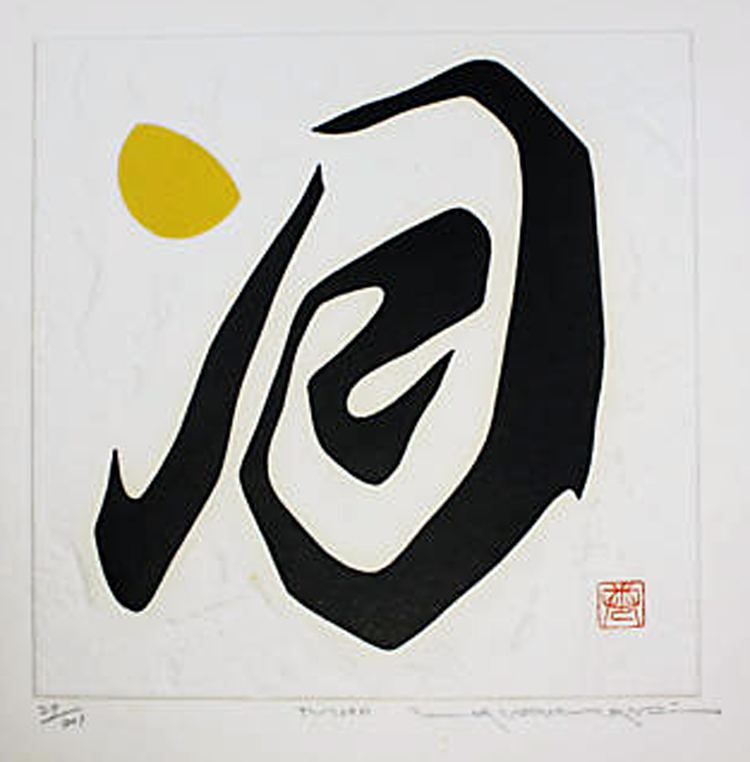Name Maki Haku | Died 2000 | |
 | ||
Maki Haku (巻白, 1924–2000) is the artistic name of Maejima Tadaaki, who was born in Ibaraki Prefecture. He was a sōsaku-hanga artist in 20th Century Japan. During World War II, Maejima Tadaaki was trained as a kamakazi pilot in the Japanese air force, but the war ended before he was assigned a mission. Haku had no formal art training, but studied for two years with the sōsaku-hanga artist Onchi Kōshirō (1891–1955).

Maki Haku is best known for his abstract-calligraphic prints. He distorted and rearranged characters and strokes to produce striking and serene images. For example, Poem 71-91 is a highly stylized representation of the kanji 無, which is pronounced mu and means nothingness, an important concept in some forms of Buddhism.

The artist participated in the Tokyo International Print Biennale in 1957 and 1960. The book Festive Wine: Ancient Japanese Poems from the Kinkafu is a translation of 21 ancient poems called Kinkafu or Music for Wagon Songs. The translation is accompanied by Maki Haku's prints that were made in 1968–69.


